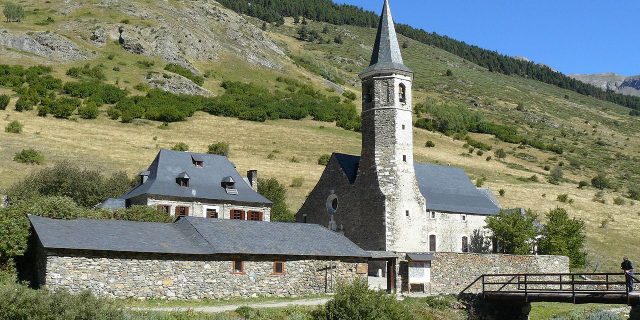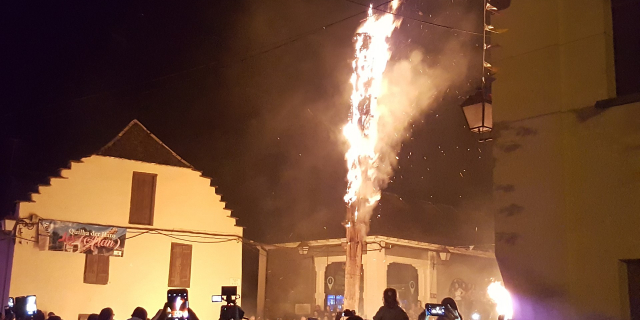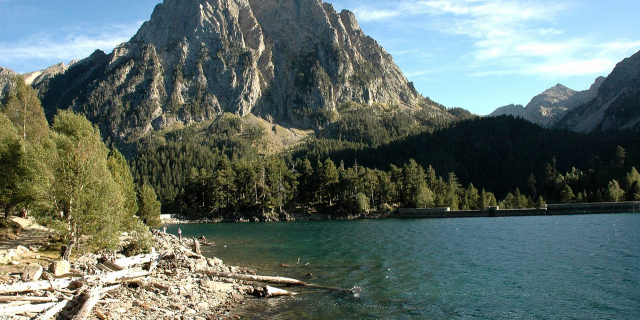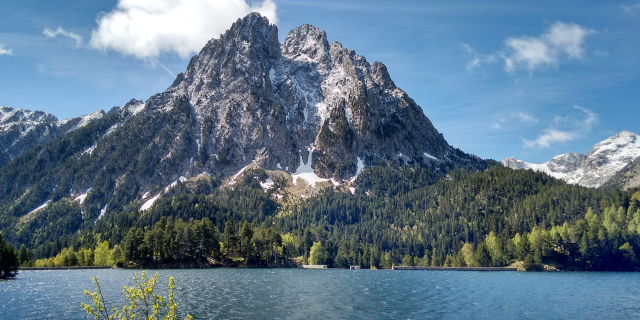Pic d'Aneto
( Aneto )Aneto (pic d'Aneto in French, formerly pic de Néthou) is the highest mountain in the Pyrenees and in Aragon, and Spain's third-highest mountain, reaching a height of 3,404 metres (11,168 feet). It stands in the Spanish province of Huesca, the northernmost of the three Aragonese provinces, 6 kilometres (4 miles) south of the France–Spain border. It forms the southernmost part of the Maladeta massif.
Aneto is located in the Posets-Maladeta Natural Park, in the municipality of Benasque, Huesca province, autonomous community of Aragon, Spain. It is part of the Maladeta massif and is located in the Benasque valley. It consists of Paleozoic terrain of a granitic nature and Mesozoic materials. Its northern side holds the largest glacier in the Pyrenees, covering 79.6 hectares (196+3⁄4 acres) in 2005; it is shrinking rapidly due to warming summer temperatures and decreasing winter precipitations over the 20th ce...Read more
Aneto (pic d'Aneto in French, formerly pic de Néthou) is the highest mountain in the Pyrenees and in Aragon, and Spain's third-highest mountain, reaching a height of 3,404 metres (11,168 feet). It stands in the Spanish province of Huesca, the northernmost of the three Aragonese provinces, 6 kilometres (4 miles) south of the France–Spain border. It forms the southernmost part of the Maladeta massif.
Aneto is located in the Posets-Maladeta Natural Park, in the municipality of Benasque, Huesca province, autonomous community of Aragon, Spain. It is part of the Maladeta massif and is located in the Benasque valley. It consists of Paleozoic terrain of a granitic nature and Mesozoic materials. Its northern side holds the largest glacier in the Pyrenees, covering 79.6 hectares (196+3⁄4 acres) in 2005; it is shrinking rapidly due to warming summer temperatures and decreasing winter precipitations over the 20th century – it covered 106.7 ha in 1981, and over 200 ha in the 19th century. It is estimated that it has lost more than half of its surface in the last 100 years, and that it may disappear around 2050.
Some 2 km away on its north-west fringe lies the Maladeta peak that, though not being among the five highest peaks in the environment, gave its name to the entire massif.[1] It subsequently earned the greatest interest of climbers, especially in the early 18th century. Mainly, it was a matter of perspective, since from the natural entrance to the valley or arriving from France, its top is in the foreground, while the crest hides the true extent of its eastern neighbor, taller and with larger glaciers. Only when Friedrich von Parrot reached the top of the Maladeta in 1817, came the realisation that both Aneto as well as its neighbours the Pico del Medio, the Punta de Astorg, the Pico Maldito and la Aguja Schmidt Endell towered higher. Until then, the Monte Perdido had been considered the highest. However, the uncovering of the highest point of the Pyrenees had hardly been accomplished when the mountain began to earn a reputation, as several glacial disasters, some fatal, dissipated the interest in crowning it - notably with the death of Luchon Barrau, considered the dean and leading expert in the area. He fell in a crack in the ice on Maladeta. This caused shock among the natives, who already fearful of venturing the glacier, became genuinely scared of the mountain which they considered cursed.[2][3]







































Add new comment